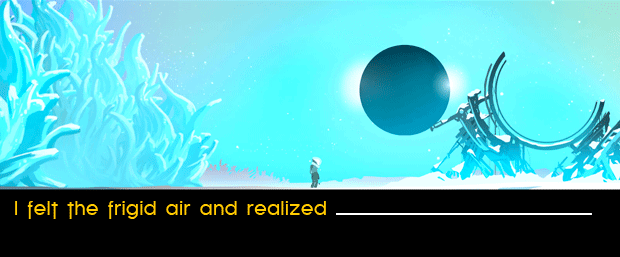“With Those We Love Alive”, a new Twine work by Porpentine, does something I’ve never seen before.
It does this.
i just played ‘with those we love alive’ by @aliendovecote and strongly recommend you do the same pic.twitter.com/zCmJUDGubM
— [nobunaga voice] (@baphomeme) October 18, 2014
When people finish playing this game, they have an armful (or handful, or footful) of symbols that they’ve drawn upon themselves. Many of them photograph their icons and tweet them at Porpentine (@aliendovecote) afterward, and she retweets their photographs.
It’s an amazing promotional tool that inspired my curiosity from the first time I saw someone do it. How would a game possibly convince players to draw on their arms? In Sharpie, no less?
Answer: The game asks nicely.
As the game progresses, players are periodically asked to draw various icons on their own bodies, with the exact nature of each icon left to each player’s interpretation. And they do.
This is hardly the first time I’ve seen creative expression in a game. Players are encouraged to express their own creativity in games ranging from Minecraft to Farmville. But the creativity lives inside the game’s enclosed lines, executed in a framework of mechanics. The game provides a platform for creativity and then houses the results within itself.
By contrast, “With Those We Love Alive” goes beyond providing a platform for creativity, and simply encourages creativity. Drawing on your arm is part of the game, but it’s not inside the game. The player could be drawing on paper instead of skin, or the player could skip the drawing process entirely. The game never requires proof that you drew. The game mechanics would never know.
But you would know. And you would have a different experience of the game because of it.
There may be a technical term for this kind of game. I think of it as collaboration.
The experience of playing “With Those We Love Alive” is a collaboration between Porpentine and each individual player. Porpentine has already provided her creativity; she invites each player in turn to provide theirs. And if you follow directions while playing the game, then you will come out the other side with a piece of artwork that is uniquely yours, despite being shaped by Porpentine’s game.
When I look for another game that accomplishes the same things – a creative, collaborative experience shared between author and audience – I think immediately of Elegy for a Dead World, by Dejobaan Games.
Elegy for a Dead World isn’t out yet – in fact, as I write this, it’s in the final 48 hours of a successful Kickstarter. (Backers will receive beta access when the Kickstarter ends, and the full game is scheduled for release in March 2015.) But it’s receiving a lot of attention because it is a game about creative writing.
The basic idea: You play as a far-future explorer, traveling through portals to distant worlds and documenting what you see. Each of the worlds is uninhabited now, and the player is charged with writing about the people who once lived there. This task is facilitated by simple prompts provided within the game – prompts like “I felt the frigid air and realized…” or “These sculptures signify…”
Unlike “With Those We Love Alive”, the creative expression of Elegy takes place within a game interface. But like Porpentine’s game, Elegy does not attempt to judge the quality or quantity of the player’s creation, and the inspiration is abstract enough to allow for a great deal of interpretation. Over the course of playing the game, each Elegy player will create a piece of creative writing that is unique to that player, despite being shaped by the shared experience of playing the game.
And after finishing Elegy, just like finishing “With Those We Love Alive”, players have the opportunity to share their creation (in this case, via Steam Workshop) and see what other players created.
“With Those We Love Alive” and Elegy for a Dead World are tapping into something special. By collaborating with their own players – by transcending game mechanics – both of these games access a design space where they can empower players with their own creativity.
I look forward to more developers experimenting in this design space. I’d love to see what we can make together.
@aliendovecote With Those We Love Alive. pic.twitter.com/Tim1lfqjrh
— Carolyn VanEseltine (@mossdogmusic) October 19, 2014





The ink drawings are also a fabulous marketing tool/potentially viral marketing campaign for “With Those We Love Alive.” I don’t know if Porpentine was thinking of it as a marketing tool during development, but it’s a pretty darn cool one. (I bookmarked it to play later, once I have access to a Sharpie.)